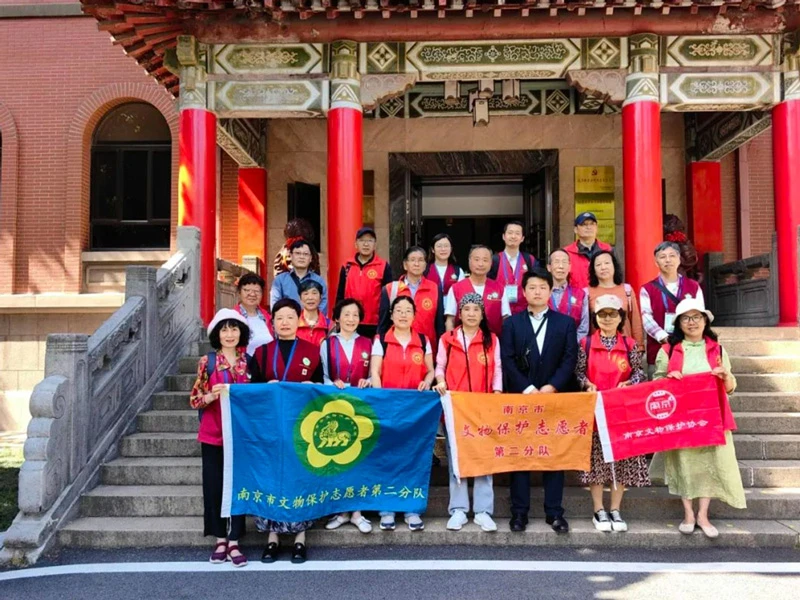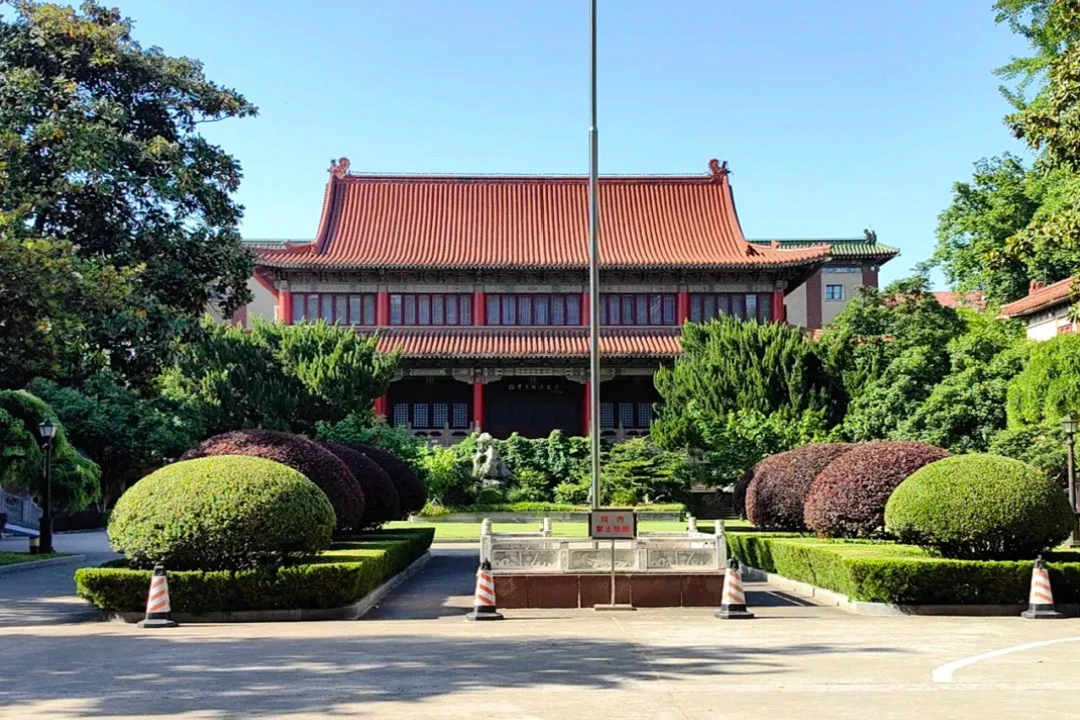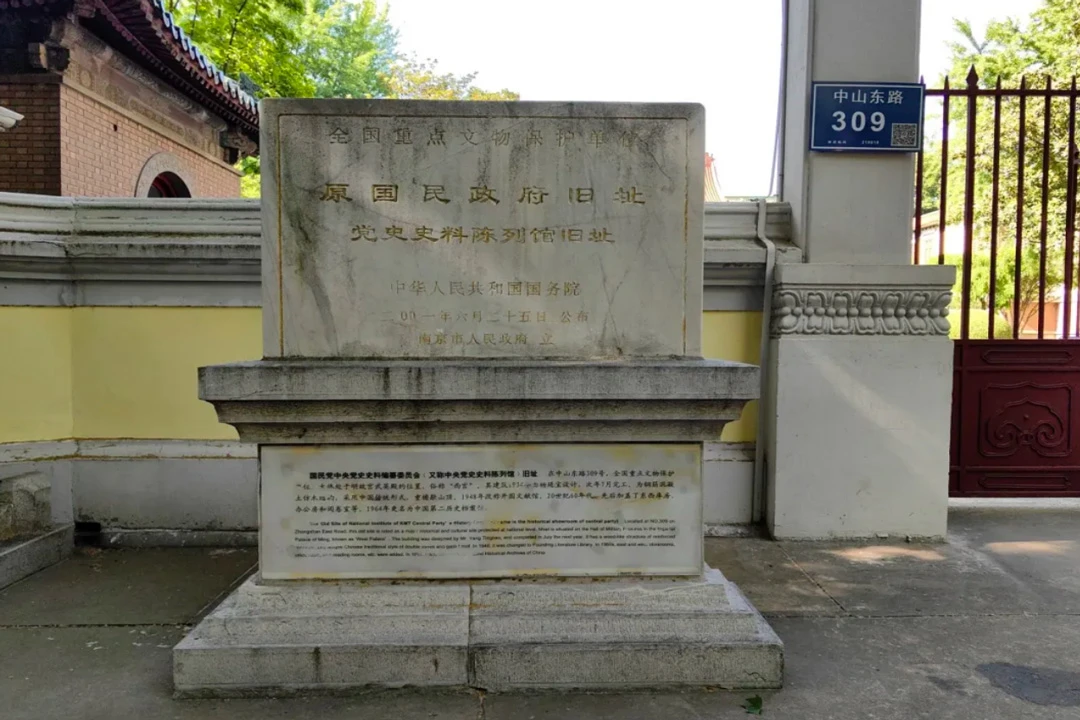On the afternoon of May 14, 2024, a team of cultural heritage volunteers embarked on a small-scale exploration of Republican-era buildings along Zhongshan East Road in Nanjing. The expedition aimed to uncover the historical significance and architectural beauty of these structures, shedding light on a pivotal period in China’s history.
The team’s first stop was the former site of the “Lizhi Society,” where they were guided through the Lizhi Society Museum by the property’s curator. The museum offered a glimpse into the building’s rich history and its connection to significant events of the past. The volunteers then ventured into the former site of the Central Hospital, designed by the renowned architect Yang Tingbao. Here, they discussed the key aspects of preserving Republican-era architecture and the methods for conducting inspections.
The final destination was the exterior of the former site of the National Government’s Party History Museum. Yang Yeting, the initiator of the exploration activity, provided a comprehensive summary of the various types of Republican-era buildings, outlining their basic features and introducing the unique styles of famous architects from that period. His insights, combining theory and practice, served as a valuable guide for future inspections and preservation efforts of these historical structures.
Nanjing boasts an impressive collection of Republican-era buildings, with nearly 300 listed under national and provincial cultural protection. The city is home to the highest level, largest scale, and most well-preserved Republican-era architecture in China. According to the “List of Protected Cultural Relics” and “Directory of Protected Historical Buildings” released by the Nanjing Municipal Bureau of Culture and Tourism, there are currently 1,119 Republican-era buildings in Nanjing.
Zhongshan East Road, located in the heart of Nanjing’s main urban area, is a major transportation artery stretching approximately 5 kilometers from east to west, with a width of 40 meters. The road is lined with an array of outstanding Republican-era buildings, making it an important scenic route. At No. 307 Zhongshan East Road stands the former headquarters of the Kuomintang’s Lizhi Society, now known as the Zhongshan Hotel.
The three Qing-style palace buildings of the Lizhi Society were designed between 1929 and 1931 by young architects Zhao Shen and Fan Wenzhao, who had recently returned from overseas studies. The Lizhi Society complex is considered a prime example of the architectural trend that blended Chinese and Western styles in Nanjing during that era. Beneath the Qing-style grand roof and palace-like silhouette, the buildings encompass modern and spacious functional spaces.
The Second Historical Archives, located in Nanjing, Jiangsu Province, is the only central-level national archive in China. This small courtyard is like a condensed version of the history of the Republic of China. Upon closer examination, the building’s entrance is designed in the style of a memorial archway. The front bears the name “Second Historical Archives of China,” inscribed by the renowned scholar Guo Moruo.
On the reverse side is the calligraphy of Sun Yat-sen, which reads “The world belongs to the public,” reflecting the values and humanistic spirit of “embracing the world.” The building was designed by the master architect Yang Tingbao and completed in July 1936, embodying his architectural philosophy throughout. The main entrance of the exhibition hall faces Zhongshan East Road, with a guard booth on each side. The exterior resembles a Qing-style palace with a double-eaved roof, covered in reddish-brown glazed tiles and trimmed with green. The main building features classical arched doorways and a surrounding corridor design, adorned with palace lanterns.
The harmonious blend of green spaces, flower beds, trees, and birdsong creates a captivating atmosphere. The corridors house archive storage rooms, each spanning 100 square meters and equipped with moisture-proof and heat-insulating treatments to maintain stable temperature and humidity throughout the year. The design seamlessly combines tranquility with practicality, and the buildings harmonize with the natural surroundings.
The exploration of Nanjing’s Republican-era buildings by the cultural heritage volunteer team not only highlighted the architectural marvels of the past but also emphasized the importance of preserving and cherishing these historical treasures. The insights gained from this expedition will undoubtedly contribute to the ongoing efforts to protect and raise awareness about Nanjing’s rich architectural heritage.
The Republican era was a time of significant cultural and social transformation in China, and the buildings that emerged during this period serve as a testament to the nation’s resilience, creativity, and adaptability. These structures not only showcase the unique blend of Chinese and Western architectural styles but also embody the spirit of a nation in transition, striving to forge a new identity while preserving its rich cultural roots.
The work of architects like Yang Tingbao and others who designed these iconic buildings demonstrates their visionary approach to creating functional yet aesthetically pleasing spaces that could stand the test of time. Their designs seamlessly integrated modern amenities and spatial requirements with traditional Chinese architectural elements, resulting in a harmonious fusion that continues to captivate and inspire to this day.
As Nanjing continues to evolve and develop, the preservation and celebration of its Republican-era architectural heritage become increasingly crucial. These buildings serve as living history, offering a tangible connection to the past and providing valuable insights into the city’s cultural, social, and political landscape during a transformative period.
The efforts of cultural heritage volunteers, such as the team that undertook this exploration, play a vital role in ensuring that these architectural gems are not lost to the sands of time. By documenting, studying, and promoting the value of these buildings, they contribute to a greater understanding and appreciation of Nanjing’s rich history and the importance of preserving it for future generations.
Moreover, the preservation of Republican-era architecture in Nanjing has the potential to benefit the city in numerous ways. These buildings not only add to the city’s visual charm and character but also serve as a draw for tourists interested in exploring China’s fascinating past. By carefully restoring and repurposing these structures, Nanjing can create unique cultural and recreational spaces that enhance the quality of life for its residents while also attracting visitors from around the world.
In conclusion, the exploration of Nanjing’s Republican-era buildings by the cultural heritage volunteer team serves as a powerful reminder of the importance of preserving and celebrating the city’s architectural legacy. Through their dedication and passion, these volunteers are ensuring that the stories and lessons of the past continue to resonate with and inspire generations to come. As Nanjing moves forward, it is essential that the city remains committed to protecting and cherishing these invaluable architectural treasures, recognizing them as an integral part of its identity and a testament to its resilience and enduring spirit.




